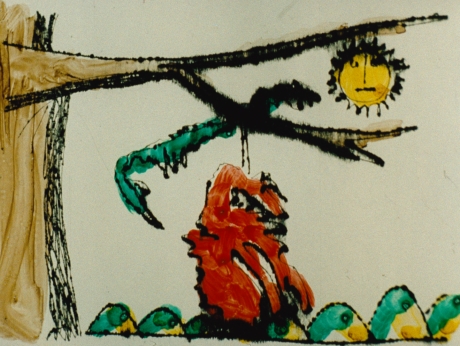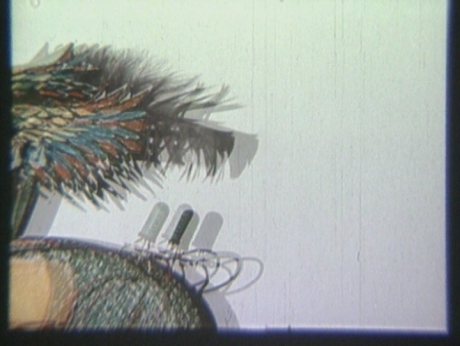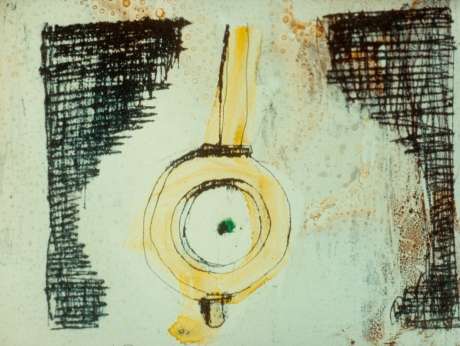
 overview
overview
About the film
Assistant Director: Grażyna Ryn-Nowosińska
Lector: Irena Falska
Music: Julian Józef Antonisz
Sound Imitation: Otokar Balcy
Editor: Krzysztof Romanowski
Production Manager: Jadwiga Koźba
Production: Animated Film Studio (Cracow)
Rights: National Film Archive
Language: pl
hide tab

 storyline
storyline
The surrealistic live-actor/animated collage story about the inevitability of growing old and the possible ways of delaying this process, for example by head magnetizing, home hibernation, giving electric shocks to the brain areas supporting the growth of the upper teeth.
hide tab

 comment
comment
hide tab



















“It is a well known fact, if only gathered from personal experience, that life is a film. The proof beyond question is that someone who has passed out drunk from vodka will later recall that he >blacked out<” - asserts an elderly professor. Our existence should thereby be taken care of, because time runs fast, as we can undoubtedly conclude when observing the childish ways of three men, which is evidence of the commence of their process of aging. According to the professor, some ways to postpone such an unflattering process include: head magnetizing, home hibernation, giving electric shocks to the brain areas supporting the growth of the upper teeth.
Having released his debut, mostly non-camera produced ‘The Phobia’ (1967), Julian Józef Antonisz turned to explore other, various directorial techniques. His following movies are unique blends of different techniques, both those traditional in animation (drawings, puppets) and live-action films (which involve actors). The end products are both amusing and reflective animated ‘short guides’: ‘How Come There’s A Bear On the Screen’ (1970), ‘Out of the Woods’ (1970), ‘How does a Sausage Dog Works’ (1971), and ‘A Few Practical Ways To Prolong One’s Life’ (1974).
This final one is an eccentric live-actor/animated collage, where scenes involving real actors (with Kazimierz Opaliński and Grzegorz Kwinta cast respectively as the professor and the subject matter) can be found next to animated shots, directed mostly using the non-camera technique (painted and drawn directly onto the film).
The title boards are preceded with the professor's short lecture which concludes with an assessment, one that could be Antonisz's own, that "life is a film". We are then presented with three genre scenes shot within the poetics of surrealism and pure nonsense: a man sitting in the restaurant ‘Under the Merry Halibut’ pours a plateful of jumble and meatballs, filled with herring “a’la japanese”, on his head. Likewise does Telesfor, a humble science worker, albeit with a glass of methylated spirit, a drink he treats himself with each morning after a meal comprising of a pack of Sport cigarettes. Ewaryst, a well-off, settled, handsome man with no addictions, pulls a toilet flusher causing a cast-iron water tank to fall on his head. Each of the adventures concludes with its main protagonists’ ascertainment enunciated in a childish voice: ‘Why is it already the evening, when I have just got out of bed’, ‘The day has passed so quickly, so, so quickly’, ‘Oh, time flies’.
"What is going on, why is it that normal people act so strangely?" – the professor is asked by a journalist (played by Irena Falska, a popular ‘TV Daily News’ star at the time). According to the professor, the one thing that all three cases have in common is an early stage of aging. The movie closes with him delivering some practical advice on how to put off the process of aging. What is most important in this story, however, is the parallel drawn between life and film. This is the Life Projector, in it a wound on a reel, a record of life, consciousness, personality. It continues to unreel with increasing speed, its linear velocity stable, yet the angular one increasing. The upper reel accelerates while the latter slows down as the reel is unwinding. This is the reason why the older we get, the faster our days pass. Let's follow the professor's advice and use a speculum to take a look into the interior of a child’s head: the reel has only started to unwind.. Now let's take a look into the an old man's skull: the reel keeps unwinding faster and faster, then suddenly stops, it runs out of film... Although is sparks with humor, there is a deeper, reflective undercurrent to be found in ‘A Few Practical Ways To Prolong One’s Life’, not unlike the future case of ‘A Light in the Tunnel’, a movie about life after death released 11 years later.
Antonisz did in fact consider life and film to be equal. ‘The pulsating realm of non-camera is my only remedy for the parallel, paranoid reality’ - he told me during our last interview. His own film was put to an end on 31st January 1987. Its closing scene took place in a resort in Lubień south of Myślenice and witnesses Antonisz frozen over his own invention, a pantograph-animograph, on which he had been drawing frames to be released as the 13th issue of the ‘Polish Non-Camera Newsreel’. Jerzy Armata